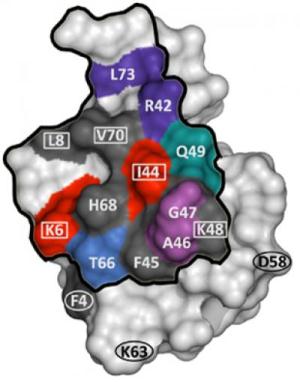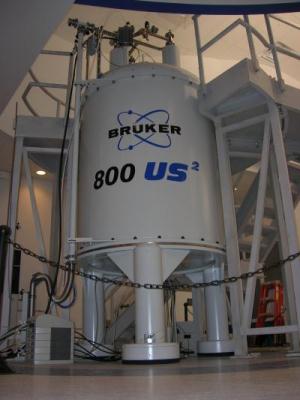

Troy, N.Y. - The purification of drug components is a large hurdle facing modern drug development. This is particularly true of drugs that utilize proteins, which are notoriously difficult to separate from other potentially deadly impurities. Scientists within the Center for Biotechnology and Interdisciplinary Studies (CBIS) at Rensselaer Polytechnic Institute are using nuclear magnetic resonance (NMR) to understand and improve an important protein purification process.
"We hope to use our insights to help those in the industry develop improved processes to provide much less expensive drugs and dramatically reduce healthcare costs," said paper author and William Weightman Walker Professor of Polymer Engineering Steven Cramer of Rensselaer.
His team's findings are published in the Sept. 2 online early edition of the journal Proceedings of the National Academy of Sciences (PNAS ) in a paper titled "Evaluation of protein absorption and preferred binding regions in multimodal chromatography using NMR." The research was funded by the National Science Foundation (NSF).
The process of multimodal chromatography has recently generated significant interest in the pharmaceutical industry. At its most basic, this process separates proteins from their surrounding materials, such as DNA and other proteins. The process works by encouraging the desired protein to stick to a material that contains a ligand, a type of molecular glue. Each ligand is only attracted to certain parts of certain proteins. Having been separated from the mixture, the specific protein can now be obtained in purer form, facilitating its eventual use as a biotherapeutic.
The more selective the ligand is at binding to a specific protein, the more efficient the process is, and the less additional steps are required to produce the final drug. This results in reduced costs for the production of the drug. But despite its widespread use and benefits, there is very little understood about how the process actually works or how the ligands can be improved.
"We are trying to understand what exactly is making these materials so useful for separating proteins," Cramer said. "And what we are looking to uncover are the fundamental interactions within the chromatographic process that make the separations possible and efficient."
For this study, the researchers used several of the advanced research facilities within CBIS. Using the Microbiology and Fermentation Core, Cramer and his colleagues grew several mutants of a protein called ubiquitin. This group of modified proteins is referred to as a protein library.
To compare the difference between multimodal systems and more traditional chromatography, the team ran the library through a less sophisticated chromatography system called ion exchange chromatography, as well as the multimodal system. They found that there was very little to no difference in the binding of proteins to ligands in the traditional ion exchange system. In contrast, there were huge fluctuations in the binding of some of the different mutants within the multimodal system.
To delve further into why this happened, they input ubiquitin and the multimodal ligands into the massive 800 megahertz NMR at Rensselaer's CBIS. The NMR uses magnetic properties within organic materials to provide information on the minute molecular chemical properties of the material. From the NMR data, they were able to determine what part and type of the protein the ligands were binding to and how strongly they would bind. Their results validated the previous multimodal chromatography comparison experiments, showing that each of the protein mutants that strongly fluctuated in their binding strength in the multimodal chromatographic system were also the same ones identified with the NMR.
"This research is helping us develop a fundamental understanding of selectivity," Cramer said. Working with his team, Cramer will work to design improved ligands and improved processes for their purification
Cramer was joined in his research by Rensselaer NMR Core Director and Research Assistant Professor Scott McCallum, and graduate students Wai Keen Chung, Alexander Freed, and Melissa Holstein. Holstein was also the recipient of the 2009 W.H. Peterson Poster Award in the American Chemical Society's (ACS) biochemical technology division for this research (only one award is given each year). She is the fourth student in the Cramer lab to earn this prestigious award in the past eight years.
Further Information:
Wai Keen Chung, Alexander S. Freed, Melissa A. Holstein, Scott A. McCallum, and Steven M. Cramer:
Evaluation of protein adsorption and preferred binding regions in multimodal chromatography using NMR.
In: Proceedings of the National Academy of Sciences; vol. 107, no. 39, 16811-16816; published online before print September 13, 2010, DOI 10.1073/pnas.1002347107
Source: Rensselaer Polytechnic Institute, USA
Last update: 20.10.2010
Perma link: https://www.internetchemistry.com/news/2010/oct10/purifying-proteins.php
More chemistry: index | chemicals | lab equipment | job vacancies | sitemap
Internetchemistry: home | about | contact | imprint | privacy
© 1996 - 2023 Internetchemistry
